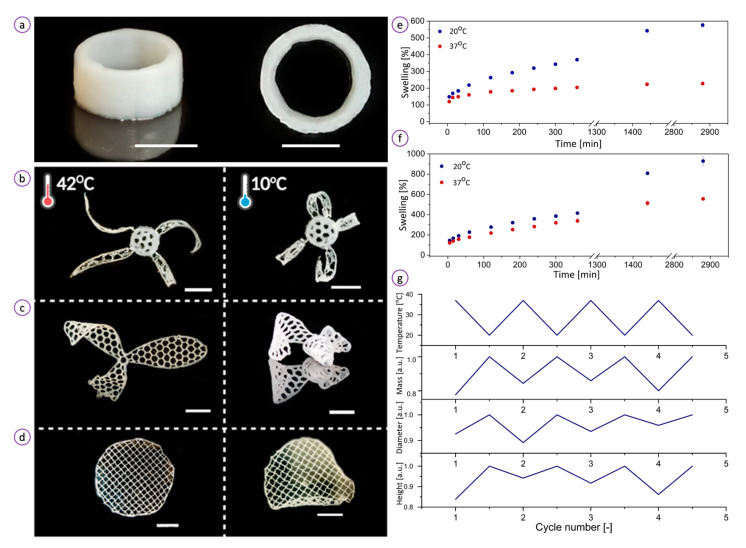Figure 4.
Three-dimensional (3D) printability and temperature-induced behavior of the hydrogel: (a) 3D-printed thermoresponsive tube demonstrates high printability of the ink. The combination of 3D printing and ink allows for the fabrication of hollow tubular structures, whose diameter alters in response to temperature change; (b) 3D-printed flower-like object with thermoresponsive petals and non-active core; (c) 3D-printed thermoresponsive hydrogel propeller; (4) 3D-printed thermoresponsive hydrogel disc. Figure (b–d) demonstrate that objects printed from the ink can be programmed to exhibit different actuation behaviors at different temperatures (42 and 10 °C). Bars correspond to 1 cm. The hydrogel swelling rates at temperatures 20 and 37 °C in water (e) and PBS (f); (g) Temperature-activated swelling (20 °C) and de-swelling (37 °C) cycles of the sample measured as a change of specimen height, diameter, and mass. The values are normalized to those at a temperature of 37 °C.

